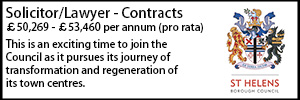Upper Tribunal allows appeal by council over imposition of conditions that compromised enforcement notice
- Details
The Upper Tribunal (Lands Chamber) has overturned a decision of the First-Tier Tribunal (Property Chamber), which it said had not been entitled to impose conditions which had the effect of compromising an enforcement notice and would “perpetuate the harm to the landscape and heritage assets identified by the inspector”.
Martin Rodger KC, deputy chamber president, also said the owner of the site concerned “seeks a substantial advantage for itself as a consequence of its own illegal actions”.
The case was brought by Amber Valley Borough Council against Haytop Country Park, a caravan site near Whatstandwell in the defined buffer zone of the Derwent Mills World Heritage Site, and within a special landscape area and adjacent to a site of special scientific interest.
Haytop had felled trees, carried out extensive ground works and built 27 concrete plinths for permanent twin-unit park homes.
Amber Valley served an enforcement notice requiring the removal of these works, and obtained a tree replacement order.
Haytop appealed to the FTT against conditions imposed by the council when it determined an application for a new site licence under the Caravan Sites and Control of Development Act 1960.
It had planning permissions dating from 1968 for up to 60 caravans, but the licence granted by Amber Valley allowed for only three. The FTT allowed the appeal and substituted a condition limiting it to 18 pitches.
Amber Valley argued the FTT erred because it overlooked the effect the licence conditions would have in indirectly legitimising development which was already the subject of the enforcement notice, but without having regard to the planning considerations which underpinned the notice.
Mr Rodger noted that in preparation for its intended engineering works Haytop unlawfully felled 121 trees and was prosecuted by the council and fined.
The FTT though allowed Haytop’s appeal and said 18 caravans should be allowed, having argued that limiting the pitches to three, where there was planning permission for 60, was unduly burdensome.
Amber Valley appealed this on grounds that the FTT had permitted Haytop to site caravans in locations which conflicted with the planning permission and the enforcement notice and had, in effect, granted permitted development rights for the road, terraces and concrete bases without regard to the relevant planning considerations.
Haytop said the enforcement notice was concerned only with the removal of development which had taken place, while the permitted development rights conferred by the licence were prospective.
It would be irrational for the council to enforce against hardstandings and services which could immediately be put back under permitted development rights, the park owner argued.
Mr Rodger said: “That is no doubt correct, as is the proposition which impressed the FTT that the enforcement notice is concerned with past defaults while the permitted development rights are forward looking.
“But these points serve only to highlight the paradox which has been created in this case by [Haytop’s] failure to comply with the enforcement notice before its application for a site licence was determined.
“The paradox, which the [park] seeks to exploit, is that pure planning considerations are said to be irrelevant to the terms on which a licence can be granted, yet the grant of the licence will carry with it permitted development rights without the planning consequences of those rights being assessed as part of the licensing process.”
He had no doubt that “the difficulty in this case is of [Haytop’s] making [as] it could have applied for planning permission for the operations necessary to create its preferred layout of the Park or for any other layout which it considered would be consistent with planning constraints.
“It could have applied for consent to do work to the protected woodland trees. It did neither but proceeded unlawfully without permission.
“It now seeks a substantial advantage for itself as a consequence of its own illegal actions by securing the existing layout without further scrutiny on planning grounds, and by arguing that it would be pointless to remove what has already been provided when something similar will be required in any event by the conditions of any modern licence. In principle the respondent should not be allowed that advantage.”
Mr Rodger said the FTT “consciously avoided facing up to the inconsistency between the enforcement notice and the permitted development rights which would follow from the conditions it imposed.
“It acknowledged that there would be considerable ‘tensions’ between the two, which were likely to result in further litigation, but it seems either to have ignored or not to have appreciated that the council would be unable to insist on full compliance with the notice once permitted development rights had been acquired. That was an error of law.”
He said the FTT had taken an approach of “washing its hands of any consideration of planning matters, and then imposing conditions which undermined the enforcement of planning control by the responsible authority, [which] was irrational.”
He concluded: “In my judgment therefore the FTT was not entitled to impose conditions which had the effect of compromising the enforcement notice and which would perpetuate the harm to the landscape and heritage assets identified by the inspector. For that reason I allow the appeal and set aside the FTT's decision.”
Mark Smulian
Sponsored articles
Walker Morris supports Tower Hamlets Council in first known Remediation Contribution Order application issued by local authority
Unlocking legal talent
Legal Director - Government and Public Sector
Contracts Lawyer
Lawyer (Planning and Regulatory)
Locums
Poll











































